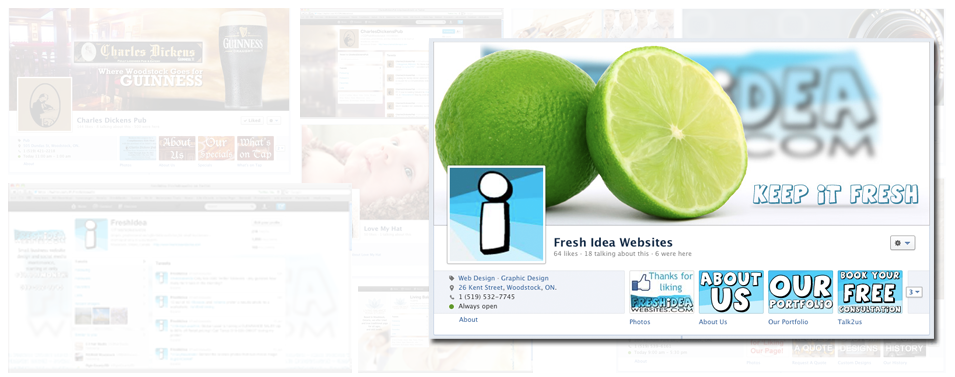With so many options available and everyone’s time at a premium, most businesses want to be sure they’re focussing what time they do have available to the network that is going to generate the most conversions for their business (that conversion might be website traffic who complete a contact form, newsletter subscriptions, followers and brand awareness, etc.)
There are 2 major factors that we use to make recommendations for a client when considering a Social Media Strategy: Demographic using the Network and Your Content. For instance, if your business doesn’t produce video content and has no intention on producing video content, then I wouldn’t recommend focussing on YouTube for obvious reasons.
There’s plenty of grey area and overlap in Social Media, so these are by no means black and white guidelines, but will give your business a starting point to figure out what may work best for you on the top 5 sites: Facebook, Twitter, Pinterest, LinkedIn, and Instagram – there are many more like YouTube, tumblr and google plus that have been making some growth progress. At the bottom I’ve compiled the links from where this information is available.
Side note: Though YouTube is one of the largest, I’ve left it off because it’s pretty easy to determine if video is for you and your business.
Facebook: 4th most visited website on the internet
Primary Demographic Using Facebook: Women ages 18-29 with some amount of college living in urban communities with a household income of more than $75 000/year. Your Content: Facebook is often used for more detailed information than other networks. There’s no restriction to the size or type of your post. Pictures, Video, blog posts, outgoing website links and links (or shares) from other Facebook pages are all common practise. Facebook filters content based on how “engaging” it is – how many people like comment or share, so use content that asks questions or request a response so that your users will engage. Someone can engage with your business by sending you a private message asking for a quote or where to get more information. |
Twitter: 7th most visited website on the internet
Primary Demographic using Twitter: Men ages 18-29 with some amount of college living in urban communities with a household income of more than $75 000/year. Note: Household incomes of less than $50 000/year are only one percentage point behind households of more than $75 000/year. Your Content: Twitter limits posted information to 140 Characters, so posts need to be short and sweet. Twitter allows text and pictures, and often will link video content through apps like TwitVid. Twitter works well if you have content you’d like people to leave twitter to experience: Link to articles on your website, sign up for my newsletter here, check out my latest youtube video at this link. Twitter doesn’t filter content. It’s a chronological list of when information was posted, so if you follow 100 people and they all posted in the last 5 minutes, you’ll see all 100 posts. Most users on Twitter will only scroll back an hour or 2 depending on how many people they follow, so you can post multiple times on twitter per day without any concern for your followers thinking you’re posting too often. Someone can engage with your business by sending you a private message asking for a quote or where to get more information, but are more likely to follow a link in your post to your website to contact you. |
Pinterest: The 16th most-visited site on the internet
Primary Demographic using Pinterest: Women ages 18-49 (covers 18-29 / 30-49 brackets equally) primarily living in rural areas, College graduates with an average household income of $50-75 000/year. Women are 5 times more likely as mean to use Pinterest. Your Content: Pinterest is only for images (although the images can and often do contain words), but the images are shown in a collage style with different images appearing at different times depending on other images that you’ve clicked. There’s no way to factor how and when you images will get shown, but we know that Pinterest makes images that are shared or commented on appear more frequently than the images with less interaction. Similar to Twitter, Pinterest focusses on traffic clicking through to your website from the images presented – It’s perfect for images that are driven by portfolio, actual work completed, client lists and products for sale online, and often works well for those who can use your product or service without being geographically close to you. |
LinkedIn: The 20th most-visited site on the internet
Your Content: Because of the strong demographic of higher income business users, linkedin is an opportunity to focus on higher end products and services, Business-To-Business services and building business relationships by creating and posting articles that will position you as an expert in your industry. Most LinkedIn connections come from existing business or personal connections, through past suppliers or clients, networking events or shared community memberships like Chamber of Commerce. |
Instagram: The 118th most-visited site on the internet
Your Content: Instagram is sort of like twitter with images. Unlike Pinterest which has a random arrangement of popular images from people you’ve followed, Instagram appears more like a timeline of pictures chronologically from when they were taken. This works well for businesses who want to tell their store in pictures, give behind the scenes shots of new products, services or new employees, and more Instagram content gets shared on at least 1 other network, either Facebook or twitter. Here are some creative ways businesses have used Instagram. |
Most visited websites on the internet: https://www.quantcast.com/top-sites/US/1?jump-to=20
Social Media User Demographics according to Buffer: http://blog.bufferapp.com/social-media-in-2013-user-demographics-for-twitter-facebook-pinterest-and-instagram
LinkedIn demographics: https://www.quantcast.com/linkedin.com


 67% of Social Media Users are on Facebook.
67% of Social Media Users are on Facebook.


